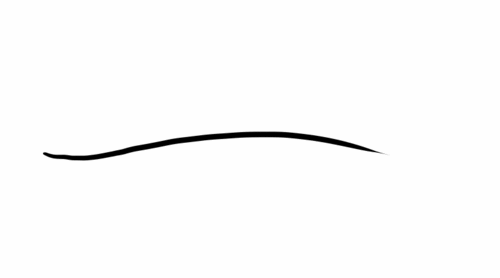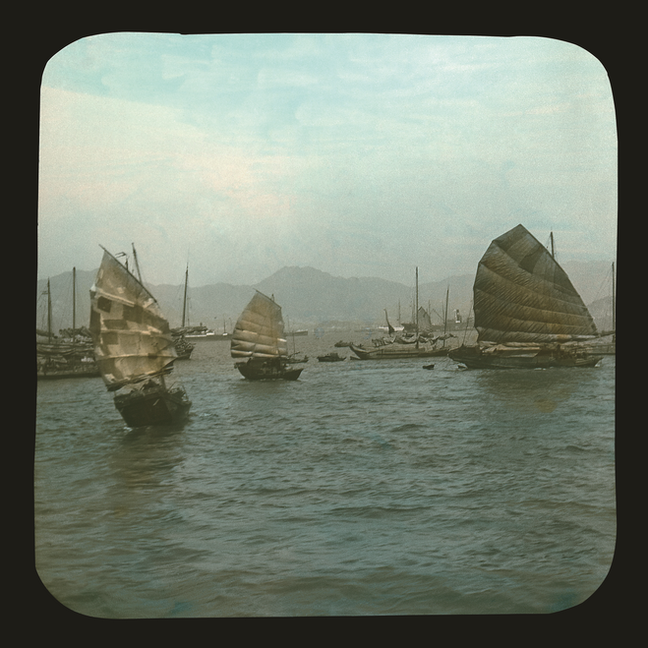

TWO YEARS
IN EAST ASIA
Travelling in Hong Kong
1907–1909
Poised to learn more about Asia and to experience China firsthand, Hungarian naval doctor Dezső Bozóky (1871–1957) travelled to Asia during the first decade of the twentieth century, recorded his journey in an unpublished diary and photographed and self-developed hundreds of images that today present rare visual resources of the former colonial city and its world-famous Victoria Harbour.
Bozóky’s stunning black-and-white and hand-coloured photographs present historic documents that allow us to re-trace his steps, offering insights into the bustling merchant town, culturally mixed society and lush natural landscape that he encountered. Bozóky’s images displayed a foreign world to his compatriots at home where they formed a treasure trove of information in early 1900s Budapest, just as they do today.

The UMAG exhibition was originally displayed in the Fung Ping Shan Building from 26 Oct 2016–08 Jan 2017. The exhibition and publication of Dezső Bozóky’s photographs were generously supported by the Consulate General of Hungary in Hong Kong, in collaboration with Dr Györgyi Fajcsák and the Ferenc Hopp Museum of Asiatic Arts. More of Bozóky’s Hong Kong photographs can be found online at the HKUL Hong Kong Image Database.
from the Diary
of Dr Dezső Bozóky
“Only those who themselves pursue the art of photography can fully appreciate how much self-restraint and patience were required to develop my photographs, sealed as I was in an airless, darkened cabin amidst the tropical heat. In a state of undress, with the electric fan frantically spinning behind me and the developing trays filled with ice, I laboured to save my photographs, which I had made with great exertion.
It was my experience from earlier journeys that impressions gained along the way, no matter how vivid or interesting, are wont to fade. And this principle applies even more so to visiting East Asia, where a multitude of new impressions, each more interesting than the last, follows one upon the other! There is a particular danger here of much being lost in a brief amount of time, of the original riot of colours and vigour waning, as each new impression squeezes another from one’s memory. To forestall this, I maintained a diary throughout the duration of our journey in which, day after day, I recorded each scene, detailing the more interesting impressions without delay.”
“WE ARE APPROACHING EAST ASIA’S MOST BEAUTIFUL PORT: HONG KONG . . .
MOUNTAINS GREEN TO THEIR PEAKS
RISE STEEPLY FROM THE SEA.
The seventh day after leaving port in Singapore we catch sight of the mountains along China’s coast. A good deal earlier we had known they couldn’t be far off with the increasing number of splendid Chinese junks; at a distance their huge mat-and-batten sails look like oversized bishops’ mitres floating on the sea. Closer up the sails’ battens remind us of giant bat wings.”


“GREY CLOUDS PRESIDE AT ITS HEAD, AND AT ITS FEET, SPARKLING IN THE SUNSHINE, ONE OF THE PEARLS OF THE BRITISH CROWN COLONIES: THE CITY OF VICTORIA IN ITS IDYLLIC SETTING. . . . WE DON’T KNOW WHERE TO LOOK FIRST, AND ONLY WISH WE HAD EYES IN THE BACK OF OUR HEADS.

Each of the ocean-going steamships greets us with flags at half-mast. Hong Kong's distinctive mountain range, the nearly 600-metre Peak, appears so suddenly around a bend it’s as if some enormous stage curtain has been raised.
. . . Our gun salute is amplified one hundred times by the mountain range. We have arrived in Hong Kong.”

“Whenever our ship needed fuel, several coal junks would moor alongside for the whole day . . . A family of fifteen might live in the raised part of the junk’s stern in a den with no windows or doors. They pass in and out through a small square opening in the roof. At the back, among the piles of wood, the women keep busy from early morning cooking and baking around an open fire. White rice steams in a huge cauldron first washed carefully in seawater. Around it in smaller pans, chopped meat and onions, green vegetables, fish, crab and mushrooms boil and fry.”


“. . . THE CHINESE SHOPS WITH THEIR
MASS OF LONG COLOURFUL SHOP SIGNS HANG FROM THE EAVES BEARING LOVELY CHINESE CHARACTERS. THE SHOPS DO WITHOUT A FRONT WALL, SO ONE CAN SEE THE ATTENDANTS SEATED INSIDE, NAKED TO THE WAIST.
Between ten and eleven in the morning, and in the afternoon around five, in other words, at the main mealtimes, all of the people working in the shops gather around a large table, and from the boss down to the youngest apprentice, they all eat together from communal bowls. Despite the heat, they have phenomenal appetites.”

“The Buddhist temples are flooded with people. Flames from the bundles of sacrificial paper leap up, while in front of the terrifying idols thousands of joss sticks emit their scented, eye-stinging smoke. The masses of people come and go; women drop to their knees, touch the floor nine times with their foreheads. Monks beat gongs mercilessly, while firecrackers explode outside. I see a little boy of about four yelling at the top of his lungs. Without noticing, his friends have pinned a string of firecrackers to his back; the fire is just now reaching his bare legs.”
Man Mo Temple,
Sheung Wan

“IN ORDER TO ALLEVIATE THE HEAT, OPEN COLUMNED TERRACES SURROUND THE BUILDINGS ON EACH FLOOR, WHILE AT STREET LEVEL COVERED ARCADES IN FRONT OF THE SHOPS PROVIDE PROTECTION FROM THE SUN’S HEAT AND THE RAIN, ALLOWING ONE TO LUXURIATE IN THE WONDERFUL SHOP WINDOW DISPLAYS OF CHINESE AND JAPANESE TREASURES . . . HERE TOO ARE THE CHINESE CARPENTERS, WORKING WITH CAMPHOR WOOD . . .

The main street of Hong Kong, the several-kilometre-long Queens Road, is where one can find the finest shops. Among my first impressions of Hong Kong belongs the scent of camphor mixed with cinnamon filling the whole of Queens Road.”


On Sundays you can see the long lines of palanquins with light-green canvas tops conveying people, among them the many Chinese women covering their heads in black veils before entering the church. The palanquin is such an inexpensive and comfortable way to ascend the mountain that even in the most pleasant winter months the people of Hong Kong will seldom walk up more than 50 or 60 metres. I once met three stylish Chinese ladies walking down the steep road. They tottered cautiously on crippled feet which had been forced into tiny shoes, all three clinging fiercely to a perhaps six-year-old girl . . .”


“HERE BENEATH THE TALL PALMS EUROPEAN CHILDREN PLAY ALL DAY LONG, CAUSING TROUBLE DASHING AROUND THE CHINESE NANNIES WHO TEETER AFTER THEM ON HOBBLED FEET.
Hong Kong’s excellent public garden is situated in the centre of town on the lowest slope of the Peak. . . . Near the park is the governor’s elegant mansion, also the English cathedral and a huge Catholic church set in a wonderful rocky precipice. Protected from the wind, ferns here grow six metres high, almost like trees, while the sago palms have fronds that reach several metres long.”


“The finest view of Hong Kong can be seen while riding the cable car to the Peak. According to a posted notice, the first row of benches is reserved for the governor—should he happen to feel like a trip. The driver is dressed in a checkered suit with black bowler-hat, gloves and the ubiquitous English pipe—as spruce as a London omnibus driver. He presses down on a lever, and we set off past magnificent gardens and villas, over lovely paths and through forests of bamboo growing ever higher. The city gradually unfolds below, while the mountain range of Kowloon grows swiftly on the other side of the harbour.”

“ALONG THE STEEP PATHS, AT ALL TIMES OF DAY, WE MEET THEM BAREFOOTED, PANTING AS THEY MAKE THEIR WAY WITH A LOAD OF BRICKS SWAYING FROM BAMBOO CANES ON THEIR SHOULDERS.

The coolie women wear wide-brimmed, peaked, rushwork hats painted indigo to protect them from the sun’s heat. These tough, thin women carry the contents of Hong Kong’s mansions straight up the mountain. Most of them have a child clinging to their back and chest. There is nowhere to leave the children during the day, so they carry them up and down the steep paths of the Peak.”

“MY FAVOURITE NEARLY DAILY WALK
LEADS ME THROUGH THESE CEMETERIES. THEY ARE SET SIDE BY SIDE ON THE LOWER SLOPE OF A STEEP, WOODED MOUNTAIN . . .
Happy Valley is ringed with high, wooded mountains; on one side lie the exquisite cemeteries, and at the bottom of the valley, within the large oval of the racecourse, are the lawns and playing fields. I am compelled to stop at the iron-barred gate, never getting my fill of the gorgeous park spreading before me. Well-tended paths lead among rows of palm trees, flowering camellias, and other spreading shade trees; cool fountains beneath pergolas are covered in a thousand colourful flowers that give off a dizzying scent.”



Exhibition Curators: Dr Györgyi Fajcsák and Dr Florian Knothe
Digital Curator: Christopher Mattison
Website Design and Illustrations: Rae Hong
Translation and Editing of Dezső Bozóky's Diary:
Adrian Hart, Rae Hong, Kikki Lam & Christopher Mattison, Elizabeth Szász, Krisztina Sarkady













